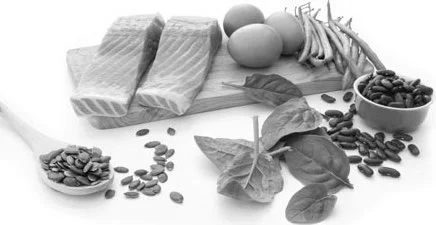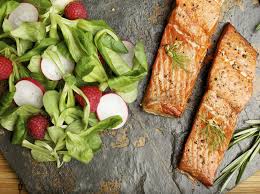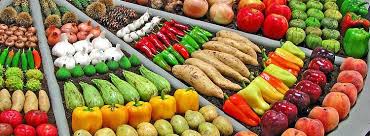In the second of our three part series on basic nutrition principles, our partner nutritionist - Hen Paxton - explores the relative merits of fats and carbohydrates in an athlete's diet.
When considering the relative merits of Fat vs Carbohydrates (CHO), are you clear about which you should be eating, when you should be eating them, and why?
This post seeks to explain this for you:
Traditional sport science thinking still backs a diet of up 70% carbohydrates for power athletes, between 4-7g/kg bodyweight per day (1,2, 3) predominantly due to the argument that the energy system we predominantly use requires that as a primary fuel source.
Yet what of the continual stories in the press that carbs are the enemy?! In the "normal" population research is increasingly supporting a reduction in carbs in the diet with a concomitant increase in "good" fats from nuts, seeds and olive oil.
Confused about how this relates to you as an athlete?
A quick refresh of our energy systems may help. (Feel free to skip this bit if GSCE PE is more recent for you!)
Firstly, think of ATP (adenosine triphosphate) as your currency of energy...
For power athletes, the predominant system used during high resistance, explosive training sessions is the ATP -PC system
This energy system provides immediate energy for up to around 12 seconds, through the breakdown of stored high energy phosphates.
The glycolytic system starts to predominate when the ATP-PC system has run its course, deriving energy by breaking down the glycogen stored in muscles
Glycogen is stored glucose, which comes from digested dietary carbohydrate.
Then comes the oxidative system: Which uses the Krebs cycle, then the electron transport chain then beta oxidation to produce ATP.
Oxidative ATP production is much slower than the 2 previous systems as it requires adequate amounts of oxygen intake.
The Krebs cycle can use either carbohydrate or triglyceride (stored fat) for energy.
Fatty acids are harder to break down than carbohydrate due to the increased oxygen needed for complete combustion.
In which case, as much of the training done in speed-power events is in the high intensity, glycogen reliant, low oxygen state range, it appears that we should be guzzling carbohydrates to fuel our training ... But is it that simple?
With my functional nutritionist hat on, my main concern with this line of thinking is that a diet that is made up of predominantly carbs in the form of grains or potatoes is essentially pro-inflammatory. Not only from the blood sugar imbalances that follow high carb meals, but research indicating that grains themselves can be inflammatory - not just wheat or gluten but all grains (4).
Wondering what I mean by blood sugar imbalance? Let me explain:
We find carbohydrates in grains or potato easy and quick to digest, meaning their stored glucose is absorbed into our blood stream quickly, causing a steep rise and “spike” in blood glucose levels.
In response insulin is released - to either shuttle this glucose into muscle to be used for energy, or into storage – as fat. Insulin itself causes the production of pro-inflammatory signals. High blood glucose levels are also toxic for us, and therefore inflammatory.
Once insulin has done its thing you may be familiar with the feeling of “sugar crashes” after a high sugar or carb intake, so maybe you reach for another snack? At the same time your body makes some glucose of its own to rescue us from this state, shooting the blood glucose level back up again, and the rollercoaster starts over!
This a stressful and pro-inflammatory situation for the body to be in continually.
Add to this the specific and detrimental effect that gluten (from several grains) has on gut integrity - leading to more inflammation - which is not just in celiac disease or gluten sensitive individuals, but in everybody (5) - and you have a potent pro-inflammatory cocktail. This does not aid recovery, let alone support the normal function of every other process we rely on. As such, chronic inflammation is now recognised as contributing to nearly every chronic disease (6).
Training already demands a lot of our bodies. Most days our training results in an inflammatory response so we repair and adapt. Surely our diet can be more supportive of resolving inflammation, not promoting it?
Is high fat, low carb the answer? Are you thinking “Doesn’t fat make me fat, clog my arteries and cause heart disease?”
No is the short answer. Specific types of fat play a role the progression of Cardiovascular Diseases (CVD) - these are called trans fats, the type that is in processed, pre-packaged food). However, other fats (you may have heard them called healthy fats like polyunsaturated omega 3’s and monounsaturated fats) actually reduce the risk of CVD. Importantly, little or no benefit is found if fat reduction is accompanied by carb increase (7).
Fat is an essential nutrient in the human diet, yes, we need it!
Humans have a great storage capacity for fat, (that is what you can pinch!) but very limited storage for glucose and glycogen. Burning fat also provides more energy per molecule than glucose does so is a more efficient fuel, both of which could be evidence that fat is in fact our preferred fuel source. Furthermore;
Lipophilic (Fat soluble) nutrients like vitamin D, A and curcumin need fat to be able to be absorbed from our gut.
Omega 3 fatty acids are anti-inflammatory, resolving the inflammatory process - they literally make a product called resolvins, (insulin blocks this pathway, causing pro-inflammatory products instead).
All our cell membranes are made from fatty acids, and need a correct and balanced structure to be able to conduct messages properly and allow nutrients to cross into the cell.
Unsaturated fatty acids also increase the feeling of “fullness” in a meal by releasing hormones that tell us we are full (8) (reducing meal size & frequency).
Fat slows down the digestion of food, releasing energy over a longer period. This balances blood glucose levels, avoiding the inflammatory peaks or crashes I mentioned, keeping us energised for longer so we don’t start snacking.
And if you need more convincing in terms of sports performance - fat is essential in proper nerve health and conduction, which is central component in maximal, efficient muscle contraction and therefore power output.
In the extreme form of high fat diets, known as a ketogenic diet CHO is kept at 10-20% of calorie intake while fats are at 70%, mostly medium chain unsaturated fatty acids, (the type in avocados, olive oil and coconut fat). As glucose is essentially not available the body is “forced” to use fatty acids in the Krebs cycle. In this circumstance the mitochondria in the liver starts to make a product called ketones (hence keto-genesis) which can cross the blood brain barrier and act as a fuel source for brain cells. Fans of this diet argue that the lower carb intake is still enough to replenish glycogen stores in muscle, while the liver can make glucose and phosphocreatine for us when needed. Every other energy need will be met through burning fat and ketones.
The evidence in support of this sort of diet in chronic disease conditions is building but the benefits of ketogenic diets in athletes, specifically power athletes is very limited.
So, is this viable for a power athlete?
A study in gymnasts does support the ketogenic diet, finding no difference in performance variables or strength test between the Very Low Carbohydrate Ketogenic Diet (VLCKD) and the western diet used, with significant improvement in body composition for the VLCK diet, (9). However, this study was only over a period of 3 months, the long-term impact of this diet on performance is still unknown. Despite this, “Instagram experts” out there love to tout this sort of diet as the solution for everything.
However, there is still a lack of understanding about the true ergogenic role of CHO in resistance training and an the impact of extreme high fat ketogenic diet on long term power output/performance.
My biggest problem with both the research and opinion in these areas are the extremes, painting the picture as either black or white; either 70% carbohydrate or 70% fat. What about a healthy middle ground with respect for the individual?
Some athletes do struggle with body composition and may benefit from very low carbs, whilst some people have naturally fast metabolisms. The sorts of one size fits all recommendations by the government, by research or press reports are not relevant to individual situations or training goals.
My second problem is the insinuation that CHO in the diet must come from grains or potatoes and that grains are an essential part of our diet and fibre intake.
Biochemically speaking, CHO’s are chains of carbon, hydrogen and oxygen, a group that includes sugars, starch and cellulose. The smallest carbohydrates are sugars, starch can be thought of as a complex carbohydrate (harder to digest) while sugar is a simple carbohydrate (easy to digest).
Well, guess where we can get all these forms of carbohydrate and fibre whilst simultaneously getting an abundance of other nutrients and vitamins at the same time? Fruit and vegetables!
Grains are a relatively new introduction to our diet, so how did our ancestors eat between 100-120g fibre/day (10) - fruit and vegetables. Approximately 50% of their energy intake!
If we are talking carbs alone - per 100g potato provides us with 21.15g and pasta 24.93g, whilst carrots give us 10.14g, beetroot, 9.96g, garlic 33.07g and artichokes 11.18g – so there are other sources out there! Although admittedly 100g of garlic may be quite offensive!
There is 4 times as much fibre in a cup of raspberries than in a slice of wholegrain bread, more fibre in a cup of brussel sprouts than a cup of brown rice. And can you imagine how many other nutrients our ancestors took in with all that fibre?! Much more than we would be getting frorm 120g of fibre from grains, with much les of the associated inflammation.
What’s even better about fibre from fruit and veg is the combination of soluble and insoluble fibres they provide. Fibre is central to gut health and prebiotic fibres in fruit and veg feed out friendly bacteria in our gut, keeping “bad “bacteria in check and supporting proper immune function reducing the likelihood of infection or illness and reducing inflammation, (11,12).
Fruit and veg also provide us with an abundance of powerful anti-oxidant, anti-cancer and anti- inflammatory phytonutrients that come from their bright colours, all of which are essential for processes from detoxification to injury repair; from healthy skin to proper hormone production, and iron and magnesium central to efficient energy production.
You just aren’t getting that from grains.
So, what am I saying?
Let’s just find a happy medium in variety.
Perhaps keep high carbohydrate intake to directly after training, taking advantage of the easily available glucose to ensure proper muscle glycogen replenishment, (and don’t forget your protein!
Include a variety of grain/pulse based carbs in your diet, like buckwheat, amaranth or quinoa (all gluten free), bulgur wheat, pearl barley, lentils and chickpeas.
Every meal aim for at least ½ plate to be fruit & vegetables, (this does include breakfast!)
Have a mixture of veg that grows below the ground (higher in starch carbohydrate) and veg that grow above the ground.
Eat all the colours of the rainbow: All vegetables and fruit provide us with a variety of fibres, prebiotic fibres, vitamins, minerals or phytonutrients
Don’t get bogged down in specifics, just eat everything!
Fats, are not now, nor have they ever been the enemy, they are essential in our diet.
Eat whole fat products (butter, bio live yoghurt, coconut fat for cooking, extra virgin olive oil on your salads, nuts and seeds in your breakfast or salads).
Avoid trans fats that are found in processed foods.
If you think you might benefit from a grain free, or high fat diet don’t undertake huge changes without speaking to a professional first. But unless following a specific diet for a diagnosed condition, try gradually reducing your reliance on grains with a concominant increase in your vegetables and fats.
Your training stresses your body enough, let’s not add to that stress through diet!
Hen.
Henrietta Paxton is the owner of The Nourished Soul. She is a qualified Nutritionist with an MSc in Nutrition. For consultation enquiries, check out her website.
References:
1. Burke L. M. et al., 2011. Carbohydrates for training and competition. Journal of Sports Sciences, 29(1), pp. 17-27.
2. Stellingwerff, T., Maughan, R. J. and Burke, L. M., 2011. Nutrition for Power Sports: Middle-Distance Running, Track Cycling, Rowing, Canoeing/Kayaking, and Swimming. Journal of Sports Sciences, 29(1), pp.79-89.
3. Slater, G. & Phillips, S. M., 2011. Nutrition guidelines for strength sports: Sprinting, weightlifting, throwing events, and body-building. Journal of Sports Sciences, 29(1), pp. 67-77.
4. Punder, K., and Pruimboom, L., 2013. The Dietary Intake of Wheat and other Cereal Grains and Their Role in Inflammation. Nutrients, 5(3), pp. 771-787.
5. Drago, S. et al., 2006. Gliadin, zonulin and gut permeability: effects on celiac and non-celiac intestinal mucosa and intestinal cell lines 1. Scand. J. Gastroenterol. 41(4), pp. 408-19.
6. Minihane, A. M., 2015. Low-grade inflammation, diet composition and health: current research evidence and its translation. British Journal of Nutrition, 114(7), pp. 999-1012.
7. Willett, W. C., 2012. Dietary fats and coronary heart disease. Journal of International Medicine, 272(1), pp. 13-24.
8. Thomsen, C. et al., 2003. Differential effects of saturated and monounsaturated fats on postprandial lipemia and glucagon-like peptide 1 responses in patients with type 2 diabetes. American Journal of Clinical Nutrition, 77(3), pp. 605-11
9. Paoli, A. et al., 2012. Ketogenic diet does not affect strength performance in elite artistic gymnasts. Journal of the international Society of Sports Medicine, 9(34).
10. Eaton, S. B., 2006. The ancestral human diet: what was it and should it be a paradigm for contemporary nutrition? Proceedings of the Nutrition Society, 65(1), pp. 1-6.
11. Schley, P. D and Field, C. J., 2002. The immune-enhancing effects of dietary fibres and prebiotics. British Journal of nutrition, 87(2), pp. 221-30.
12. Sherry, C. L. et al., 2010. Sickness behavior induced by endotoxin can be mitigated by the dietary soluble fiber, pectin, through up-regulation of IL-4 and Th2 polarization. Brain Behavior and Immunity




